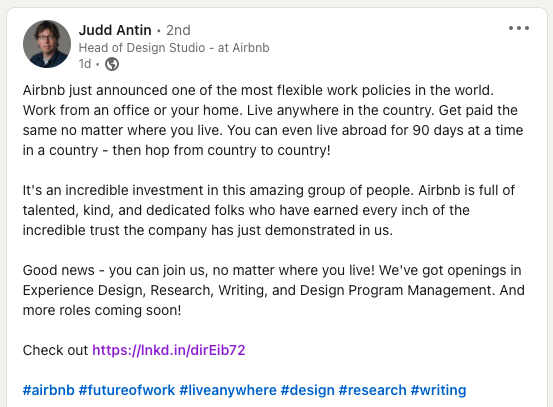Many companies who have offices in multiple countries have a location-based salary structure policy for their employees. It means that two individuals who are doing the same kind of work bringing same value to the org are paid differently because of their location—because of the difference in the cost of living index in their respective countries. This sounds funny to me.
A lives in India, and is working as RoleX. B lives in the US, and is working as RoleX. They bring the same value to the team, to the organization goals, for the identified metrics. The organization is paying them for the work, and not the cost of construction of their houses or for their food. It means that the org should pay them the same salary. Is there even an argument?
I saw this discussion on Twitter and shared my thoughts.
I don't believe in 'cost of living index' argument unless my work uses some physical resources and materials such as coal or wood that are too cheap in certain countries. In digital, it should be same. https://t.co/PNvKK2HdOF https://t.co/imRHLLRpJE
— Vinish Garg 🎗 (@vingar) April 11, 2022
Paying less to the employees in a certain country only because the fuel, housing, food, and education are less expensive there is a stupid reason. Ishbel McWha-Hermann, of the University of Edinburgh Business School writes about INGOs’ dual salary systems to address inequality.
It is good to see companies like Airbnb doing the right things, as this LinkedIn post by Judd Antin shows (see the LinkedIn post).

Of course not every company can be or should be Airbnb, and not everyone necessarily needs to make public claims about their pay equity policies. But we can see the merit in such policies.
For example, if you have two kids A and B who are of the same age, study in the same grade, and are almost of the same levels of intelligence. A studies in a public school and B studies in a much higher ranked school. Do you give more nutritious diet to B merely because of their higher ranked school? They both are fulfilling your expectations with similar merit points.
Likewise, I do not agree with it when tech conferences price the tickets depending on the participant’s country. If A and B attend a design systems conference whether in London or in New York and whether online or in-person; their gains and takeaways from the conference are the same regardless of the fact (assuming) that A joined it from India and B joined it from France. So, the ticket pricing should be same for the participants from all the countries. Certainly they can segment the audience for logical criteria such as whether they are volunteers, or students, or from a mon-profit.
Our technology work does not depend on iron ore, coal, or wood for its raw material. It is based on Intellect and intellect is beyond the borders.
Intellect is beyond the boundaries. I know many designers and programmers in the US who work for equal of lower hourly quote than Indians. It is about the confidence gained by their own investments in building an intellect over a period of time.
— Vinish Garg 🎗 (@vingar) January 7, 2022
The location based pay structure policy shows how the organization have set up its standards and it shows up in their practices in many other areas such as in strategy, climate policy, compliance, or operations. Technology enables what we let it to enable. Pay equal.
—
This topic is part of my advanced course in product content strategy, content design, and UX Writing. See the course details for how we can find and add more meaning to our work.
